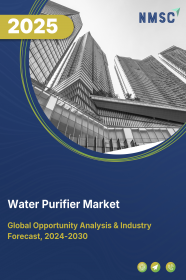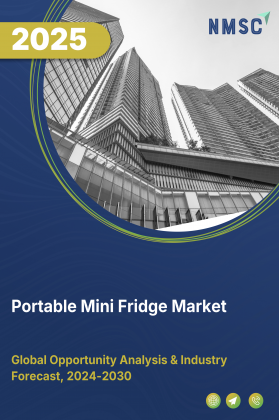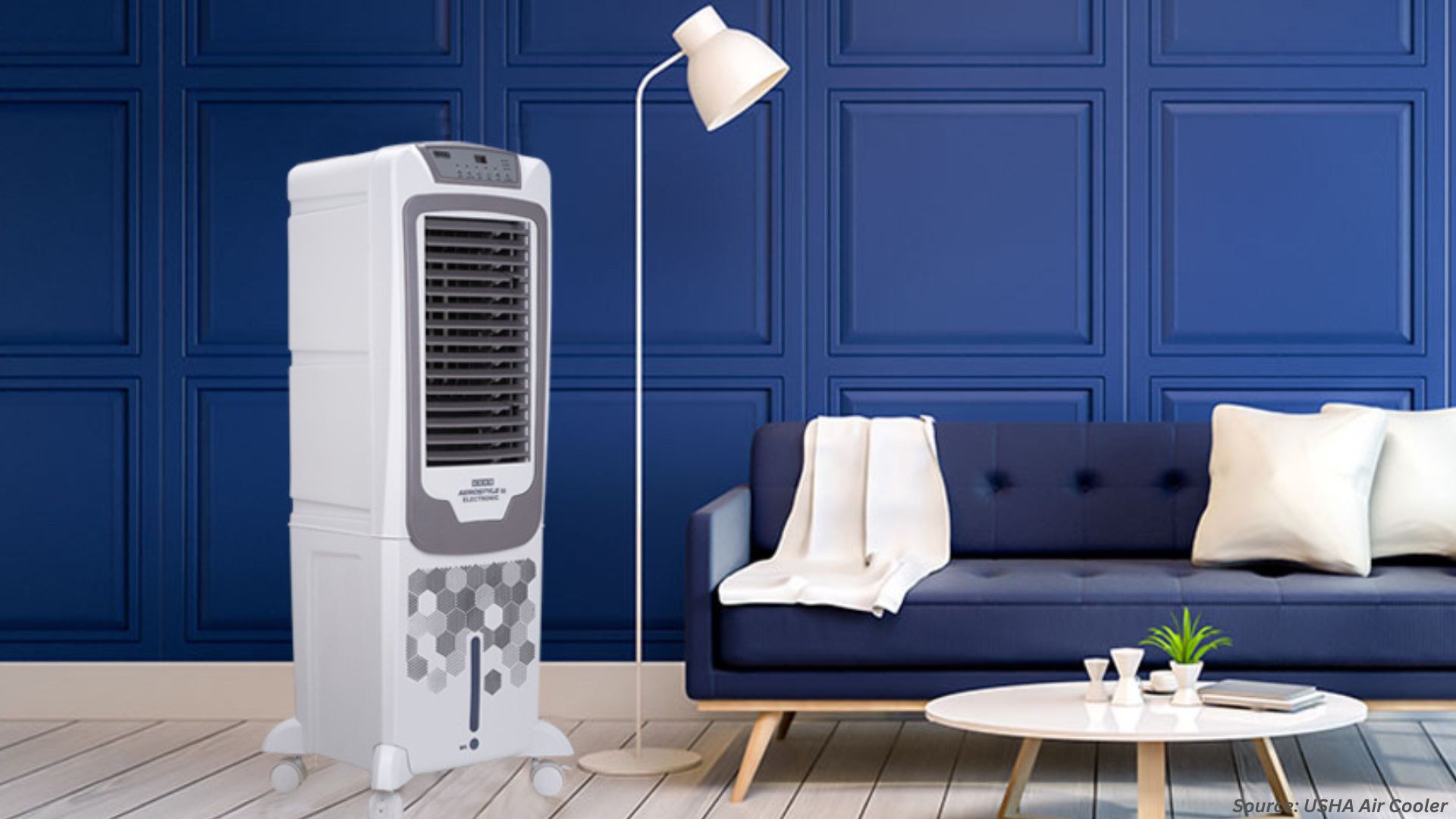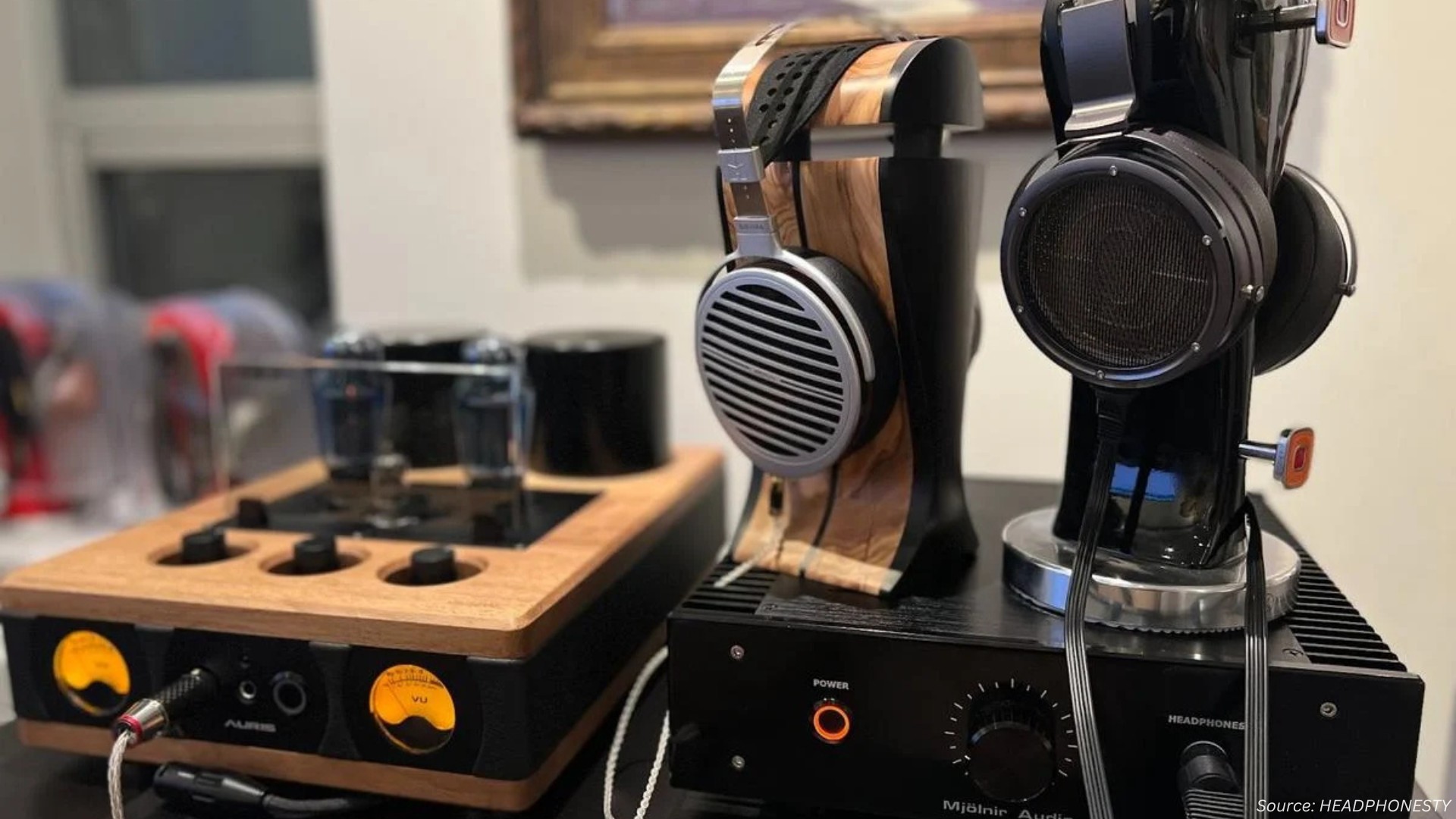
Water Purifier Market by Technology Type (Reverse Osmosis (RO), Ultraviolet (UV), Gravity-based, Activated Carbon and Others), by Portability (Portable and Non-Portable), by Capacity (Below 5 Liters, 5–10 Liters, 10–20 Liters, 20–50 Liters and Above 50 Liters), by Price Range (Low-Priced, Mid-Priced and High-Priced), by Distribution Channel (Retail Sales, Direct Sales and Online Sales), and by End User (Commercial and Residential)- Global Opportunity Analysis and Industry Forecast, 2023–2030
Industry: Retail and Consumer | Publish Date: 09-Oct-2025 | No of Pages: 476 | No. of Tables: 419 | No. of Figures: 334 | Format: PDF | Report Code : RC385
Market Definition:
The global Water Purifier Market size was valued at USD 40.75 billion in 2022 and is predicted to reach USD 82.66 billion by 2030, registering a CAGR of 7.8% from 2023 to 2030.
A water purifier decontaminates water by removing undesired substances, chemicals, pathogens, microorganisms, and other dissolved solids to make it potable. Water purifiers retain essential vitamins and minerals in water and remove the extra salts, suspended particles, and microbes. Based on the technology used, various types of water purifiers are available in the market: reverse osmosis (RO), ultraviolet (UV), and gravity-based purifiers. Water purifiers provide clean, potable water for industrial, pharmaceutical, chemical, and medicinal uses.
Furthermore, pollutants such as suspended particles, parasites, bacteria, algae, viruses, and fungi are reduced in number through the purifying process. Water purifiers are primarily used in residential and commercial spaces. In addition, they are used in disaster-prone areas as well as by military personnel, campers, hikers, and workers living in areas where effluents contaminate drinking water.
Emergence Of Smart Purification
The water purifier market is undergoing a significant transformation with the rapid integration of smart technologies. Modern purifiers are no longer limited to basic filtration—they are now equipped with intelligent features such as real-time monitoring, mobile app connectivity, and adaptive purification modes. These advanced systems can analyze consumption patterns, adjust purification levels accordingly, and even send proactive maintenance alerts to users. Consumers are increasingly inclined toward such technologically enriched solutions, particularly in urban households and digitally connected environments.
The launch of AI- and IoT-enabled purifiers by leading players underscores the shift toward intelligent water management. These systems ensure optimum mineral retention, track water quality indicators like pH and TDS, and promote healthier consumption habits. As technology continues to blend with health-focused home appliances, the preference for smart purifiers is rapidly becoming a key market trend, boosting product innovation and market expansion
Multifaceted Advantages Of Water Purification Systems
The growing awareness of waterborne diseases and the demand for high-quality drinking water have fueled the adoption of home and point-of-use water purifiers. These systems effectively eliminate harmful pathogens, chlorine by-products, and heavy metals—ensuring safer, cleaner water for everyday use. Beyond health protection, purified water contributes to improved skin condition, enhanced digestion, and stronger immunity, making it a vital part of wellness routines in households.
Moreover, modern purification technologies also address the challenges posed by hard water and contaminants that affect taste and odor. In culinary applications, clean water preserves the natural flavors of food, promoting healthier cooking practices. Additionally, installing purification systems at the point of water entry helps in reducing scaling, prolongs the lifespan of plumbing fixtures, and minimizes long-term maintenance costs. Brands introducing advanced filtration stages and proprietary purification mechanisms are setting new benchmarks in quality assurance, further driving consumer demand in the market.
High Cost Of Water Purifiers Along With Energy Consumption And Maintenance
The adoption of water purifiers is significantly hindered by their high initial purchase cost, especially for models equipped with advanced purification technologies such as reverse osmosis (RO), ultraviolet (UV), and multi-stage filtration systems. These systems, while effective, often require a substantial upfront investment, making them less accessible to price-sensitive consumers. Additionally, the recurring costs associated with electricity consumption, filter replacements, and routine maintenance can further discourage widespread usage, particularly in areas where disposable income is limited.
Moreover, the lack of consumer awareness regarding the long-term health benefits of purified water often leads to a preference for cheaper, less effective alternatives. In many regions, the perceived complexity and maintenance demands of water purifiers also act as deterrents, resulting in slower adoption rates. These combined factors continue to pose a significant challenge to the market’s growth potential.
Rising Adoption Of Nanotechnology In Water Purifiers
The integration of nanotechnology in water purifiers is unlocking new growth avenues for market players. With rising consumer demand for advanced and efficient water purification systems, nanotech-based purifiers are emerging as a transformative solution. These systems offer superior performance in removing a broad range of contaminants, including bacteria, viruses, heavy metals like arsenic, oil residues, and other microscopic impurities that conventional systems struggle to eliminate.
Their energy efficiency, minimal maintenance, and compact, modular designs make them highly appealing for both urban and rural applications. Moreover, the ability to tailor nanotech purifiers to specific regional water quality challenges allows companies to offer more targeted and innovative products. As health awareness increases and the need for reliable water purification intensifies, the adoption of nanotechnology is set to become a critical differentiator for brands aiming to strengthen their presence and customer loyalty in the evolving water purifier market.
The Asia-Pacific Market Holds the Lion’s Share of the Aater Purifier Market
Asia-Pacific currently holds the largest share of the water purifier market and is expected to continue its dominance during the forecast period. This region has limited reserves of water suitable for drinking & hygiene owing to the lack of basic drinking water availability and growing population, which in turn drives the market’s growth.
According to the estimates of the World Vision Organization in 2020, more than 369 million people in the Asia Pacific region do not have access to basic sanitation services, and 165 million people lack access to drinking water.
Moreover, the water purifier industry is gaining significance, as the problem of severe water pollution has surfaced due to rapid industrialization and increased use of pesticides that deteriorate the water quality. According to the report published by the USC US-China Institute in July 2022, in China, only 14% of water is suitable for usage and is used for basic needs, including hydration, sanitation, hygiene, and cooking.
Also, according to the studies conducted by the Indian Institute of Technology, Kharagpur, in 2020, the levels of pesticides, such as atrazine and malathion, found in the water were 46 times higher than the permissible limits prescribed by the World Health Organisation (WHO), which is 0.9 mg per liter of water.
Europe is Growing Steadily in the Water Purifier Market
Europe is expected to show a steady rise in the water purifier market share due to the rising cases of skin diseases and growing awareness about maintaining skin health and boosting the body’s immune system. According to World Health Organization published in 2020, about 1,543 people died from skin disease in Germany.
Also, the growing incidences of waterborne diseases that caused several health issues, such as diarrhea and cholera, in Spain increased the demand for water purifiers in the region. For instance, in September 2021, the city council of Muxia, Spain, reported an increase in the number of patients with acute gastroenteritis (AGE). AGE was caused due to the direct consumption of tap water, and about 115 probable cases were ascertained during the investigation by the local health authority.
Competitive Landscape
The water purifier industry comprises various key players such as 3M Company, A.O. Smith Corporation, Brita LP, Kent RO Systems Ltd., LG Electronics Inc., Panasonic Corporation, Pentair Plc, Whirlpool Corporation, Honeywell International Inc., Midea Group Co., Ltd., Livpure, Coway Co., Ltd., Havells, Urban Company, V-Guard, Philips, Aquafresh RO, Tata Swach, Jaipan Industries Ltd., Puricom Water Industrial Corp.. These market players have adopted various strategies, such as acquisitions and product launches across various regions, to maintain their dominance in the market.
For instance, in May 2025, 3M Company,home water purification / filtration market (including 3M, Pentair, A. O. Smith) is projected to grow from USD 35.25 billion in 2024 to USD 62.88 billion by 2032, driven by rising health awareness and innovation in filtration technologies.The 3M continues to market under-sink, whole-house, and cartridge filtration systems in its consumer line.
Also, in April 2025, A. O. Smith Corporation, Opened a new Product Development Center to enhance collaboration, sustainability, and innovation in water-related products. The company also acquired Atlantic Filter Corporation (Florida-based water treatment provider) to extend its portfolio.
Moreover, in June 2025, Kent RO Systems Ltd.,Received initial approval from SEBI for its IPO, signaling capital market traction.The company is expanding beyond just water purifiers into appliances, hoping that new categories will contribute ~50% of revenue over time.
Water Purifier Market Key Segments
By Technology Type
-
Reverse Osmosis (RO)
-
Ultraviolet (UV)
-
Gravity-based
-
Activated Carbon
-
Others
By Portability
-
Portable
-
Non-Portable
By Capacity
-
Below 5 Liters
-
5–10 Liters
-
10–20 Liters
-
20–50 Liters
-
Above 50 Liters
By Price Range
-
Low-Priced
-
Mid-Priced
-
High-Priced
By Distribution Channel
-
Retail Sales
-
Direct Sales
-
Online Sales
By End User
-
Commercial
-
Residential
By Geography
-
North America
-
The U.S.
-
Canada
-
Mexico
-
-
Europe
-
The U.K.
-
Germany
-
France
-
Italy
-
Spain
-
Denmark
-
Netherlands
-
Finland
-
Sweden
-
Norway
-
Russia
-
Rest of Europe
-
-
Asia-Pacific
-
China
-
Japan
-
India
-
South Korea
-
Australia
-
Indonesia
-
Singapore
-
Taiwan
-
Thailand
-
Rest of Asia-Pacific
-
-
RoW
-
Latin America
-
Middle East
-
Africa
-
Key Players
-
3M Company
-
A.O. Smith Corporation
-
Brita LP
-
Kent RO Systems Ltd.
-
LG Electronics Inc.
-
Panasonic Corporation
-
Pentair Plc
-
Whirlpool Corporation
-
Honeywell International Inc.
-
Midea Group Co., Ltd.
-
Livpure
-
Coway Co., Ltd.
-
Havells
-
Urban Company
-
V-Guard
-
Philips
-
Aquafresh RO
-
Tata Swach
-
Jaipan Industries Ltd.
-
Puricom Water Industrial Corp.
Report Scope and Segmentation
|
Parameters |
Details |
|
Analysis Period |
2022–2030 |
|
Base Year Considered |
2022 |
|
Forecast Period |
2023–2030 |
|
Market Size Estimation |
Billion (USD) |
|
Market Segmentation |
By Technology Type (Reverse Osmosis (RO), Ultraviolet (UV), Gravity-based, Activated Carbon, Others), by Portability (Portable, and Non-Portable), by Capacity (Below 5 Liters, 5–10 Liters, 10–20 Liters, 20–50 Liters, Above 50 Liters), by Price Range (Low Priced, Mid Priced, High-Priced), by Distribution Channel (Retail Sales, Direct Sales, and Online Sales), by End User (Commercial, and Residential). |
|
Geographical Segmentation |
North America (U.S., Canada, Mexico) Europe (UK, Germany, France, Italy, Spain, Denmark, Netherlands, Finland, Sweden, Norway, Russia, Rest of Europe), Asia-Pacific (China, Japan, India, South Korea, Australia, Indonesia, Singapore, Taiwan, Thailand, Rest of Asia-Pacific), Rest of the World (Latin America, Middle East, Africa) |
|
Companies Profiled |
3M Company, A.O. Smith Corporation, Brita LP, Kent RO Systems Ltd., LG Electronics Inc., Panasonic Corporation, Pentair Plc, Whirlpool Corporation, Honeywell International Inc., Midea Group Co., Ltd., Livpure, Coway Co., Ltd., Havells, Urban Company, V-Guard, Philips, Aquafresh RO, Tata Swach, Jaipan Industries Ltd., Puricom Water Industrial Corp. |

















 Speak to Our Analyst
Speak to Our Analyst

























